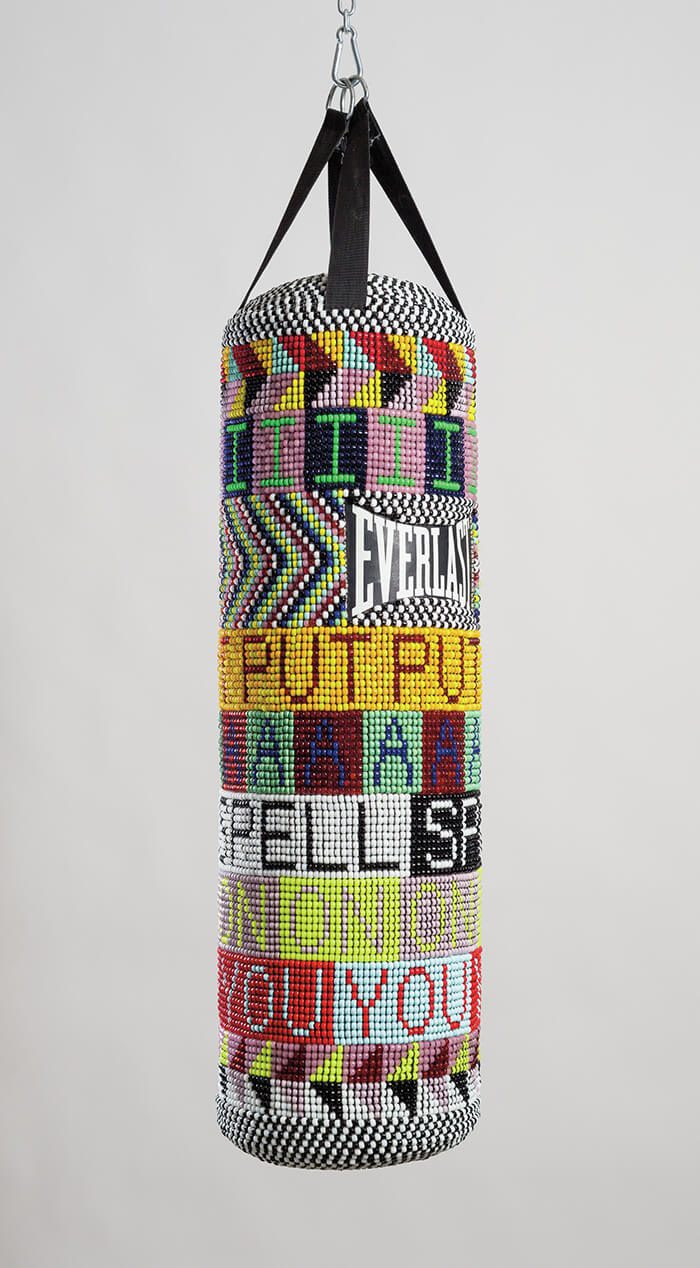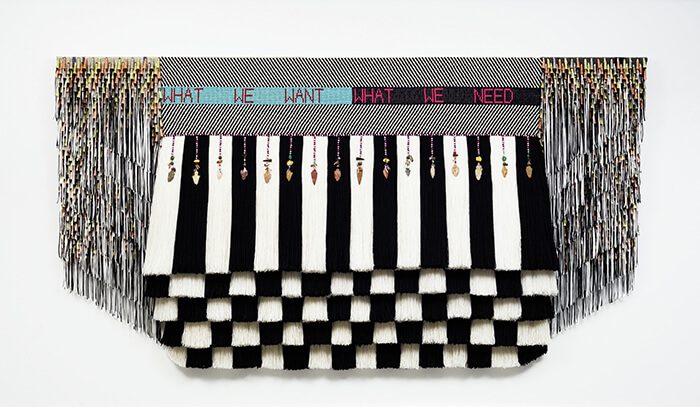
Denver Art Museum, Denver, CO
May 13 – August 12, 2018
Words, whether in the form of slogans, mantras, or hip-hop lyrics, matter, and they are treated reverentially and humorously by multimedia artist Jeffrey Gibson (Mississippi Band Choctaw, Cherokee), whose work is the subject of Like a Hammer, a show on view at the Denver Art Museum through mid-August of this year. Denver’s alt-weekly publication, Westword, described the show as “over-the-top,” and that’s not inaccurate. True to its name, Like a Hammer packs a sartorial punch; it’s colorful, sometimes relentlessly so, and Gibson’s downright mastery of multiple mediums is on full, eye-dazzling display.
I don’t need to tell you how hip Denver’s art scene is, and some of its most must-see spots are in downtown’s Cultural Arts District. Depending on whom you ask, the Clyfford Still Museum, opened in 2011, is either a chilly mausoleum or a fittingly sleek monument to an ultimately inscrutable abstractionist. Just a stone’s throw away is the 135-year-old Denver Art Museum, which, despite its rock-like, fortress-y appearance, shows no signs of slowing down.

Just a few weeks ago, family business whisked me up to the Mile High City, where I made a beeline for DAM. After being introduced to Gibson in the form of a fantastically beautiful hardcover catalog (Jeffrey Gibson: Like a Hammer, published by Delmonico Prestel in association with DAM), I was champing at the bit to get an in-person glimpse of work by this versatile artist, whose fixation with language manifests in work featuring pop lyrics, words of encouragement, or Christian hymns. Gibson might be most immediately recognizable for his repurposed Everlast punching bags, covered in meticulously patterned rows of bright seed beads, often arranged into phrases both encouraging—like in 2016’s KNOW YOUR MAGIC, BABY or, less straightforward, like 2014’s PEOPLE LIKE US. Extending well beyond the bottom rim of the bags are tassels, many fixed with jangling bells that would send up cacophonous noise if the punching bag was used as originally designed. In 2014’s WHAT WE WANT, WHAT WE NEED Gibson’s technical and linguistic prowess again shines, this time in the form of a two-dimensional, rainbow-hued woven and beaded tapestry. Gibson’s work has precedents in Native American beading and textile traditions—inspiration explored in detail in the exhibition’s accompanying book; in a foreword written by curator John Lukavic, the artist is described as being at the forefront of a “movement that acknowledges the past and draws power from it to leap beyond old limits into the future.”



